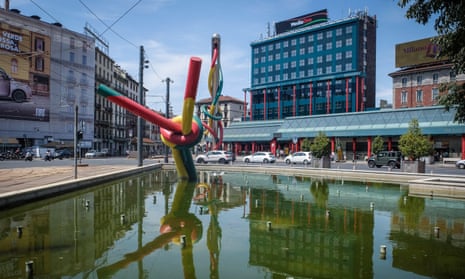Authorities in Milan are turning off public fountains amid warnings of daytime water rationing as Italy battles one of its worst droughts in decades.
The measure, which comes after the wider Lombardy region declared a state of emergency, targets about half of the city’s 100 decorative fountains, with the plug already pulled on several over the weekend and the rest to be switched off in the coming days.
Fountains hosting fish and plants are exempt from the rule, as are drinking fountains.
Residents in the business and fashion hub have also been urged to reduce water use at home as much as possible.
In addition, inhabitants and business owners have been told not to set their air conditioning units below 26C in order to conserve energy, after parts of the city were last week hit by power cuts, believed to have been caused by a surge in the use of air conditioners amid high temperatures.
“We must take action and we believe it is right to do our part,” said Beppe Sala, the mayor of Milan.
Italy is experiencing an intense, protracted heatwave with temperatures forecast to eclipse 40C in parts of the country by the end of the week.
The drought has hit northern regions particularly hard, where a parched Po River, Italy’s longest waterway, is wreaking havoc on everything from farming and hydroelectric power to supplies of drinking water.
Fabrizio Curcio, the chief of Italy’s civil protection department, said on Monday that the Po was up to 80% lower than usual as a result of rainfall being 40-50% beneath the average of recent years and snowfall being down by 70%.
The drought has also spread to the Arno River in Tuscany and the Tiber and Aniene, both in Lazio, and is blighting several lakes, including those in the south.
Curcio said a state of emergency was expected to be announced in other regions as the government established anti-drought measures, which could include daytime water rationing in some areas. Nightly restrictions on water use are already in place in several northern towns ,while many are dependent on having water supplies brought in by truck.
Attilio Fontana, the president of Lombardy, said the drought was the worst the region had ever experienced. The consequences of the Po valley drought on agriculture is estimated at more than €3bn, according to Coldiretti, the farmers’ association.
